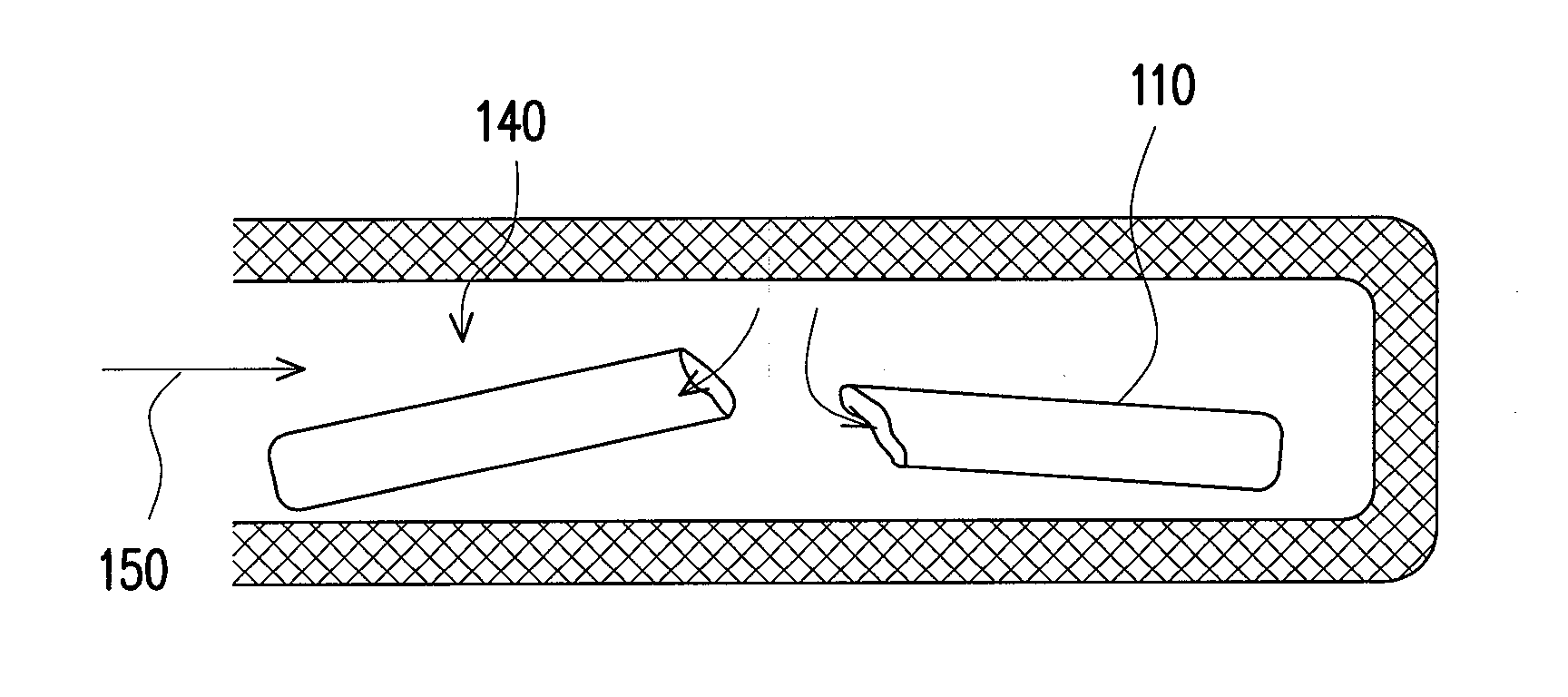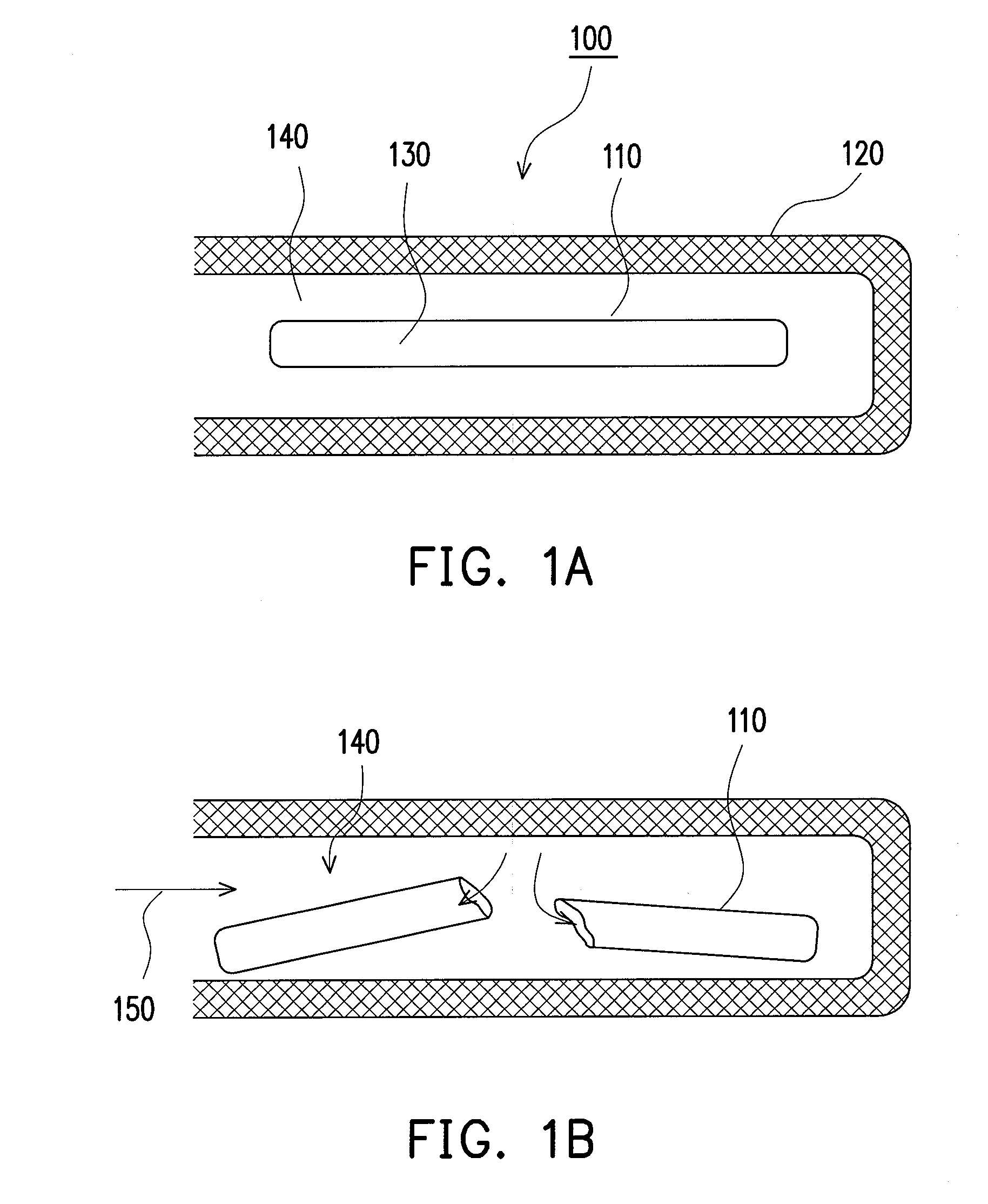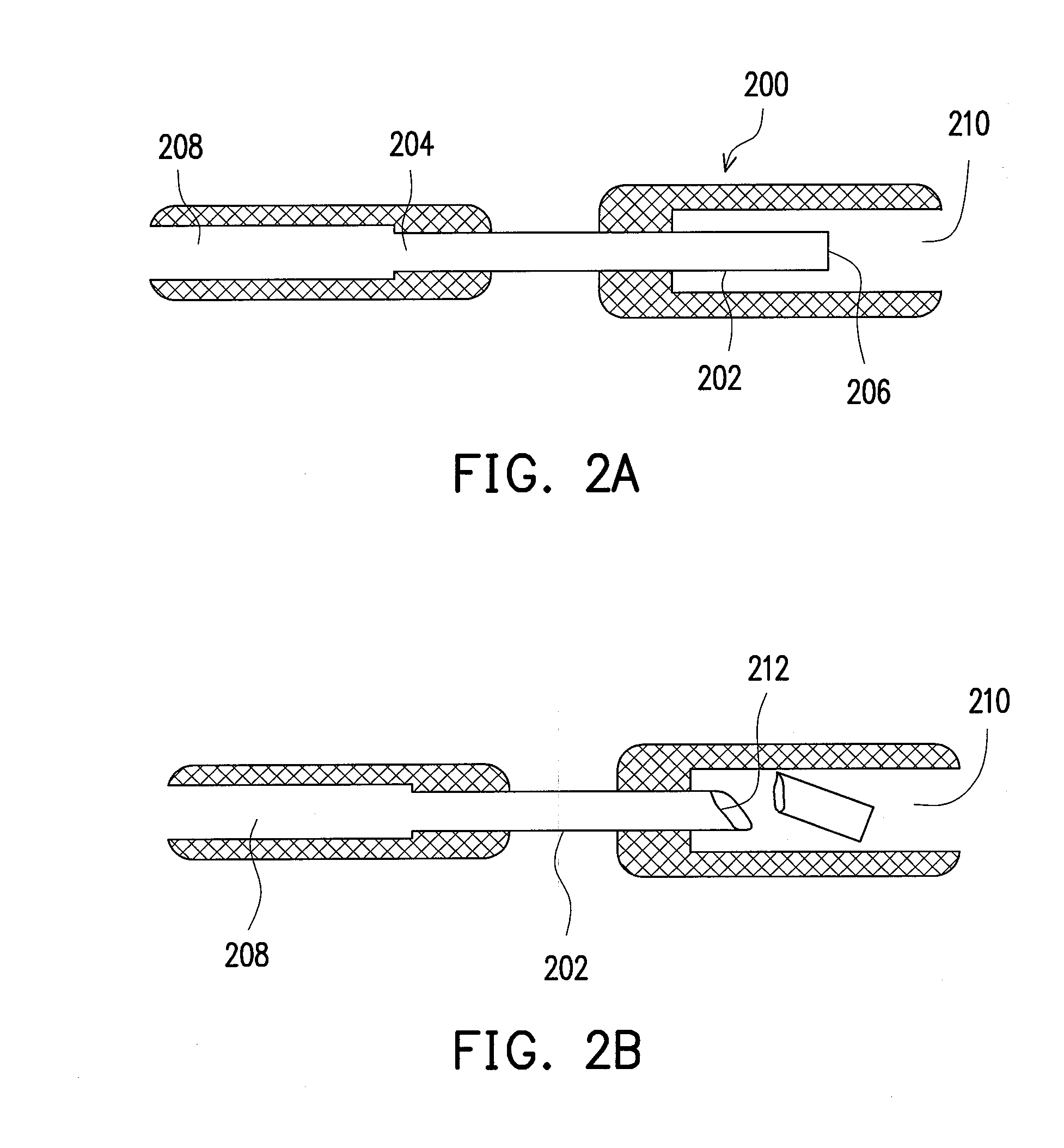Fluidic device
a fluid device and magnetic actuator technology, applied in fluid pressure control, laboratory glassware, instruments, etc., can solve the problems of high cost of mechanical arms, inconvenient to carry, and labour-intensive work of conventional biochemical reaction experiments, and achieve the effect of small and portabl
- Summary
- Abstract
- Description
- Claims
- Application Information
AI Technical Summary
Benefits of technology
Problems solved by technology
Method used
Image
Examples
first embodiment
[0038]Referring to FIGS. 3A and 3B, a fluidic device according to a first embodiment of the present invention is shown. The fluidic device 300 includes a main body 301 with, for instance, a T-shaped groove composed of a groove 302 and a groove 304 perpendicular thereto. A capillary 310 made of a brittle material is placed in the groove 302, and a portion thereof is disposed in the groove 304, i.e., protruding in the groove 304. The capillary 310 is, for example, a glass capillary, or a fragile structure made of quartz, ceramic, plastic, or a composite material. A closed space 315 inside the capillary 310 seals a proper amount of vacuum, compressed air, gas, liquid reagent, or fluid. The fluidic device 300 further includes a magnetic actuating unit set composed of a first magnetic unit 320 and a second magnetic unit 330. The first magnetic unit 320 is an external actuating unit made of, for example, a magnetic or electromagnetic coil, and the second magnetic unit 330 is an adsorbate ...
second embodiment
Sandwich Assay
[0052]Referring to FIG. 5, a schematic structural view of a fluidic device according to a second embodiment of the present invention is shown. The fluidic device 500 includes a main body 505 with a reaction channel 510 of a multi-bent structure. A capture antibody zone 511, a scrap zone 513, and an actuating zone 515 are disposed in the multi-bent structure. Further, a capture antibody array 514 is disposed in the capture antibody zone 511. Vacuum tubes 530,532, 534, and 536 in different sizes are disposed in the actuating zone 515, and each have a portion protruding in the actuating zone 515. The protruding portions of the vacuum tubes 530, 532, 534, and 536 are, for example, glass capillaries, or fragile structures made of quartz, ceramic, plastic, or a composite material. In this embodiment, the protruding portions of the vacuum tubes 530, 532, 534, and 536 are broken according to a designed time sequence, so as to generate an adsorption force for drawing an inspect...
third embodiment
Nucleic Acid Molecule Inspection (Glass Microbead) Chip Design
[0060]Referring to FIG. 6A, a schematic structural view of a fluidic device (an inspection chip herein) according to a third embodiment of the present invention is shown. The inspection chip 600 includes an L-shaped reaction channel 605. The reaction channel 605 includes a quantitative zone 610, a reaction zone 620, and an actuating zone 630. The quantitative zone 610 is connected to the reaction zone 620 through a network micro-structure zone 615, and the reaction zone 620 is connected to the waste liquid collection zone 630 through a network micro-structure zone 625. As shown in FIG. 6B, a plurality of particularly processed glass microbeads 622 is disposed in the reaction zone 620. Thus, when targets to be inspected in a sample pass by, each glass microbead 622 will be integrated with the targets (i.e., targets 624 in the figure) and capture the targets in the chamber. Molecules not to be inspected or impurities (i.e.,...
PUM
 Login to View More
Login to View More Abstract
Description
Claims
Application Information
 Login to View More
Login to View More - Generate Ideas
- Intellectual Property
- Life Sciences
- Materials
- Tech Scout
- Unparalleled Data Quality
- Higher Quality Content
- 60% Fewer Hallucinations
Browse by: Latest US Patents, China's latest patents, Technical Efficacy Thesaurus, Application Domain, Technology Topic, Popular Technical Reports.
© 2025 PatSnap. All rights reserved.Legal|Privacy policy|Modern Slavery Act Transparency Statement|Sitemap|About US| Contact US: help@patsnap.com



